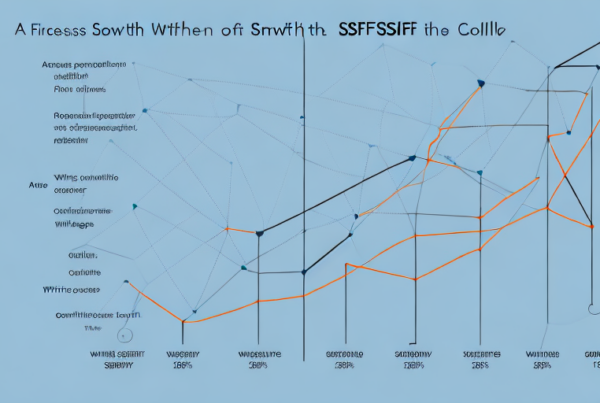Investing your money in a self-managed super fund (SMSF) can be a great way to take control of your financial future. In this article, we’ll explore how to maximize the returns on your SMSF portfolio in 2023. Whether you’re new to SMSF investing or have been doing it for years, there’s always room to improve your portfolio strategy.
Understanding SMSF Portfolios
Before we dive into how to maximize returns, let’s review what an SMSF portfolio is and the benefits of maintaining one.
An SMSF portfolio is a collection of investments held within an SMSF. As with any investment portfolio, the goal is to earn a return on your investment over time. However, as a trustee of your own SMSF, you have more control over the investments within your portfolio than you would in a traditional superannuation fund.
One of the primary benefits of an SMSF portfolio is that it allows you to tailor your investments to your individual needs and investment goals. Additionally, SMSFs have greater flexibility in terms of investment options, including the ability to invest in direct property and collectibles. Finally, SMSFs can offer tax advantages for those who manage their portfolios effectively.
With an SMSF portfolio, you have the option to invest in a variety of assets, including shares, property, and cash. Many SMSF trustees choose to invest in blue-chip Australian shares, which are large, established companies with a strong track record of performance. These shares can provide a steady stream of income through dividends and have the potential for long-term capital growth.
Another popular investment strategy for SMSF portfolios is investing in exchange-traded funds (ETFs). ETFs are a type of investment fund that are traded on stock exchanges, and they provide exposure to a diversified portfolio of assets. ETFs are a cost-effective way to gain exposure to a range of different asset classes, including Australian and international shares, bonds, and commodities.
Investing in commercial and residential property is another strategy that SMSF trustees use to maximize returns. With an SMSF, you can invest in property directly or through a property trust. Property can provide a steady stream of rental income and has the potential for capital growth over the long term.
Finally, some SMSF trustees use leverage to invest in property or shares. Leverage involves borrowing money to invest, which can amplify your returns but also increases your risk. It’s important to carefully consider the risks and benefits of using leverage before incorporating it into your SMSF investment strategy.
Conclusion
By maintaining an SMSF portfolio, you have greater control over your investments and can tailor your portfolio to your individual needs and investment goals. There are a variety of investment strategies that SMSF trustees use to maximize returns, including investing in blue-chip Australian shares, ETFs, property, and using leverage. However, it’s important to carefully consider the risks and benefits of each strategy before incorporating it into your SMSF portfolio.
Assessing Your Risk Tolerance
When selecting investments for your SMSF portfolio, it’s essential to understand your personal risk tolerance. Risk tolerance refers to the level of risk you are comfortable taking on in your investments. It’s important to assess your risk tolerance before making investment decisions because investing always involves some level of risk and understanding your risk tolerance can help you make informed decisions.
There are several factors that can influence your risk tolerance, including age, investment goals, and income. Generally, younger investors with longer investment horizons can afford to take greater risks, while those nearing retirement or with short-term goals may want to take a more conservative approach. However, there is no one-size-fits-all approach to risk tolerance, and it’s important to consider your personal circumstances when assessing your risk tolerance.
Factors Influencing Risk Tolerance
As mentioned, age, investment goals, and income are all factors that can influence your risk tolerance. Other factors that may come into play include your investment experience, your overall financial situation, and your personality. Some people are naturally more risk averse, while others are more comfortable taking on risk.
It’s important to note that risk tolerance is not the same as risk capacity. Risk capacity refers to the amount of risk you can afford to take on based on your financial situation. For example, someone with a high net worth may have a higher risk capacity than someone with a lower net worth.
Balancing Risk and Reward
Investing always involves a trade-off between risk and reward. Generally, investments with higher potential returns also come with higher levels of risk. It’s important to find a balance between risk and reward that aligns with your investment goals and risk tolerance.
A financial adviser can help you determine the appropriate balance for your SMSF portfolio. They can help you assess your risk tolerance, understand your investment goals, and recommend investments that align with your needs.
Adjusting Your Portfolio Based on Risk Tolerance
It’s important to periodically review your SMSF portfolio and make adjustments as necessary based on changes in your risk tolerance or investment goals. For example, if you find that you are becoming more risk averse as you approach retirement, you may want to shift your investments to a more conservative portfolio.
It’s also important to remember that risk tolerance is not static and can change over time. Life events such as marriage, having children, or a change in employment can all impact your risk tolerance. It’s important to reassess your risk tolerance periodically to ensure that your investments align with your current needs and goals.
Diversifying Your SMSF Portfolio
One of the most critical investment strategies for an SMSF portfolio is diversification. Diversification involves investing your money across a range of different asset classes and investment types to spread risk. By diversifying your SMSF portfolio, you can reduce the impact of market volatility and protect your retirement savings.
Importance of Diversification
Diversification is essential for SMSF portfolios because it helps to reduce risk. When you invest in a single asset or asset class, you are exposing yourself to the risks associated with that particular investment. For example, if you only invest in Australian shares, your portfolio will be impacted by the performance of the Australian share market. However, if you diversify your portfolio by investing in a range of asset classes, such as cash, fixed interest, property, and shares, you can reduce the impact of any one asset class on your overall portfolio.
Another benefit of diversification is that it can help to improve your returns. By investing in a range of asset classes, you can take advantage of different market conditions and investment opportunities. For example, if the share market is performing poorly, your cash and fixed interest investments may provide a stable source of income.
Asset Allocation Strategies
Asset allocation is a key part of diversification. A well-diversified SMSF portfolio should include a mix of asset classes, including cash, fixed interest, property, and shares. The proportion of each asset class in your portfolio will depend on your investment goals, risk tolerance, and investment horizon.
Cash and fixed interest investments are generally considered to be low-risk investments and can provide a stable source of income. Property and shares are higher-risk investments but can provide higher returns over the long term. It’s important to consider your investment goals and risk tolerance when deciding on the proportion of each asset class in your portfolio.
Diversifying Across Investment Types
It’s also important to diversify across different investment types. For example, within the share market, you might invest in a mix of Australian and international shares and across different industries. This can help to reduce the impact of any one share or industry on your portfolio.
Another way to diversify across investment types is to invest in managed funds. Managed funds pool your money with other investors and invest in a range of different assets, such as shares, property, and fixed interest investments. This can provide a higher level of diversification than investing in individual assets.
In conclusion, diversification is a critical investment strategy for SMSF portfolios. By investing across a range of different asset classes and investment types, you can reduce risk and improve your returns over the long term. It’s important to consider your investment goals, risk tolerance, and investment horizon when deciding on the asset allocation and investment types for your SMSF portfolio.
Selecting High-Performing Investments
Investing can be a great way to build wealth over time, but it’s important to choose the right investments to maximize returns. Selecting high-performing investments requires careful analysis and research.
Analyzing Market Trends
One way to identify high-performing investments is by analyzing market trends. By examining historical data and current market conditions, investors can gain insight into which industries or investment types may be more likely to perform well than others. For example, in 2023, certain industries like technology, renewable energy, and healthcare may be more likely to see growth than others.
However, it’s important to note that market trends are not always a reliable predictor of future performance. Economic and political factors can also impact the performance of investments, so it’s important to consider a variety of factors when making investment decisions.
Identifying Growth Sectors
Another way to identify high-performing investments is by identifying growth sectors. These are industries that are expected to grow rapidly in the coming years. By investing in these sectors early on, investors can potentially reap significant returns.
In 2023, some examples of growth sectors might include renewable energy, healthcare, and fintech. Renewable energy is expected to continue growing as more countries and companies commit to reducing their carbon footprint. The healthcare industry is also expected to see growth as the global population ages and demand for healthcare services increases. Fintech, or financial technology, is another area that is expected to see growth as technology continues to revolutionize the financial industry.
Evaluating Individual Investment Options
Finally, it’s important to thoroughly research individual investment options to ensure they have a strong track record and are likely to perform well in the coming years. This involves analyzing the financial health of the company or fund, as well as examining past performance and future growth potential.
Investors should also consider diversifying their portfolio by investing in a variety of different assets, such as stocks, bonds, and real estate. This can help to minimize risk and maximize returns over time.
Overall, selecting high-performing investments requires careful analysis and research. By examining market trends, identifying growth sectors, and evaluating individual investment options, investors can potentially maximize their returns and build long-term wealth.
Conclusion
Maximizing returns on your SMSF portfolio in 2023 requires a combination of investment strategies, risk management, and careful selection of individual investments. By following the tips outlined in this article, you can create a diversified portfolio tailored to your individual investment goals and risk tolerance.




